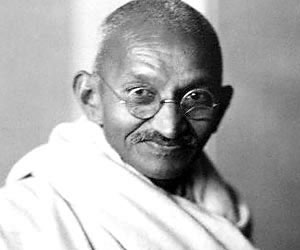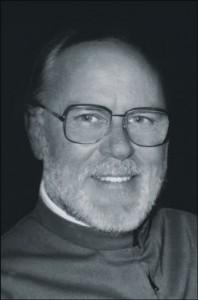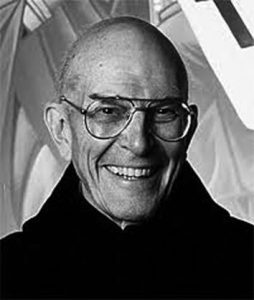Christian Meditation
In former articles on ‘contemplation’ I confined myself to the Christian tradition up to about 1950. I then wrote articles on secular meditation and ‘Buddhist or Asian meditation’. It is probably true to say that up to about the middle of the 20th century most Christians assumed that they had nothing to learn from the traditions of meditation and contemplation that have existed among Hindus and Buddhists for nearly 3,000 years.
However, Vatican II changed all this. The Council teaches that all people have the Holy Spirit (L.G. 40) and that all sincere people will be saved. In a short decree on non-Christian religions (Nostra Aetate), the church encourages prudent dialogue with non-Christian religions. She rejects nothing that is ‘true, good and holy’ in such religions. Hindus and Buddhists have been practising meditation for nearly three millennia. They have produced many saintly men and women who reached a very high degree of spiritual development. Mahatma Gandhi is one example among many. One of the questions for us Christians is - can the Asian masters help us to better practise meditation and contemplation?
Since about 1950 many Christians have tried to integrate what is best in Hinduism and Buddhism with Christian contemplation. Dechanet, Bede Griffiths, Abishiktananda, Francis Mahieu, William Johnston and Anthony de Mello have all made a huge contribution to the dialogue between East and West.
In this article, however, I wish to say a few words about two forms of Christian prayer that have been strongly influenced by Asian techniques of meditation. I refer first of all to ‘Christian Meditation’, which is a way of praying, started by John Main O.S.B. John Main learned to meditate from a Hindu in Malaya. He showed courage and practical wisdom in taking what was best in Hindu meditation and using it in a Christian context, just as Aquinas used Aristotle to enrich Christian theology and spirituality.
‘Christian Meditation’ is very similar to ‘Centering Prayer’, which was started in the U.S.A by Thomas Keating and others. Both methods consist of sitting still and repeating a mantra or sacred word until a deep inner peace and silence is induced. Both methods lead to inner stillness. Both claim that being interiorly still constitutes an excellent preparation for the Spirit to work in our hearts. Both techniques lead to this quietness, and demand that we maintain this inner silence, as best we can, through the whole period of the meditation by the recitation of a mantra or sacred word.
Both insist that we practise this meditation morning and evening for at least twenty minutes. John Main says that thirty minutes is the optimum time; twenty minutes is the minimum.
There are some differences in the two techniques, but they are not significant; they are far outweighed by the similarities. Both ‘Centering Prayer’ and ‘Christian Meditation’ have spread throughout the Christian world in the past forty years.
These two types of prayer can be classified as ‘contemplative prayer’ in which we cease to use most of our faculties. I dealt briefly with this type of contemplation in a former article on the subject.
Are these two types of prayer identical with ‘contemplation’ as understood by John of the Cross? There are similarities and differences. John of the Cross, De Sales and other authorities say that we reach a stage in prayer where we must abandon thinking and feelings. Both saints presuppose that initially we have practised discursive meditation, using our intellect, imagination and feelings. But in time many are led into simplicity and they must develop a new way of praying.
John Main and Keating on the other hand recommend their technique to everyone, no matter where they are on the prayer journey. All are invited to practise their type of prayer. They do not require any special inspiration. They claim that their ‘meditation’ is for everyone. However, they would require in addition to ‘Centering Prayer’ or ‘Christian Meditation’ other Christian practises such as the exercise of virtue and good works, the Eucharist, other forms of personal prayer and spiritual reading. In other words there is a time for communing with God in deep silence, without the noise of words. There is also a time for using our faculties and feelings in vocal prayer and spiritual reading. A healthy prayer life seems to demand a balanced blending of active and passive prayer. I think that this holds for everybody.
I would like to suggest that these two types of prayer can be very helpful for people who have been led into a kind of desert. Many pray-ers will tell you that their prayer is one long struggle with distractions. It consists of aridity and dropping distractions and this continues indefinitely. They cannot use their faculties to enkindle devotion. At the same time they find it difficult to stay simply in God’s presence. For such people ‘Centering Prayer’ or ‘Christian Meditation’ provides a very simple technique for remaining in God’s presence and being relatively free from distractions. In other words it will be much easier to persevere in arid distracted prayer if we adopt one of the two methods just mentioned and persevere in it. They complement John of the Cross, who simply advises us to stay in God’s presence in a passive way. But he offers no technique for us to do this. Without a technique for maintaining quietude, passive prayer is difficult to practise.
We may ask if Main and Keating are justified in recommending their method of ‘meditation’ (contemplation) to everyone? Is it helpful for everybody? As far as I know Asian forms of meditation are offered to everyone who is willing to undertake the required discipline. I think that ‘meditation’ fulfils a human need and is therefore helpful at least at a natural level for everybody. I hope that this has become clear in the articles on secular and Buddhist meditation. Meditation is often recommended, in its secular form, by psychiatrists and contributes greatly to psychic health. It seems to be especially helpful to people who are over active at the level of consciousness, and who never activate their deep-self. In other words people often suffer psychologically and spiritually when the conscious level of our psyche is overactive and the unconscious dimension ignored. Many scientific studies have demonstrated that meditation is therapeutic. It helps both bodily and mental health. It gives the deep-self a chance to come alive and thereby helps us physically, psychologically and spiritually. Many studies have shown that this is true. Everybody needs to preserve a proper balance between conscious and unconscious activity.
To sum up, there seems to be sufficient evidence to state that people who live in the modern over-sensitised world will be greatly helped physically, psychologically and spiritually if they commit themselves to meditation as understood by Main and Keating. In deep inner silence they will open themselves up to the Holy Spirit.





 Entries(RSS)
Entries(RSS)